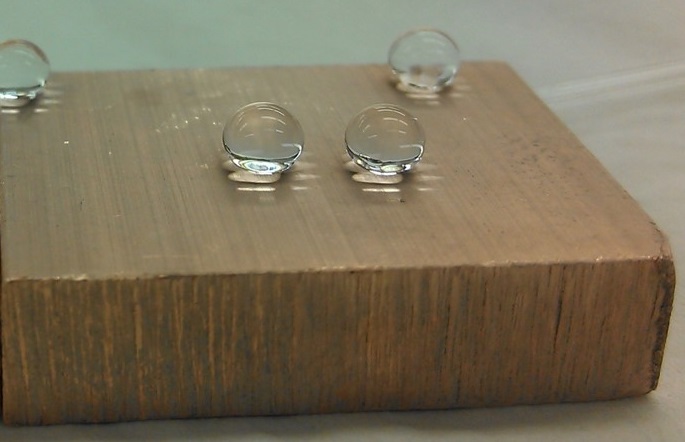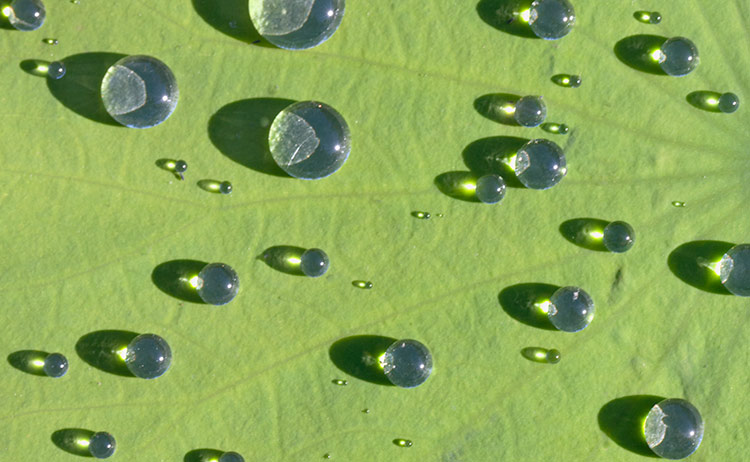Videos
On this page, we have some videos and pictures of altered behavior of fluids on tailored surfaces. You can also find more videos on our YouTube channel: SIRE Lab. If you are a high school student, teacher, an undergraduate/graduate student, or an engineer interested in the science behind these videos, please contact us and we will be glad to work with you.
Can a naturally hydrophilic (wetting) material like copper be made hydrophobic (water-repellant)?
It is easy to make hydrophobic surfaces from naturally water repellant materials such as Teflon. Researchers at SIRE Lab have engineered the surface topology of copper at nanoscale resulting in a superhydrophobic surface (highly water repellant). In the picture shown below, it can be seen that water droplets form a near-spherical shape on the hydrophobic copper surface. For comparison, an image of water droplets on a naturally superhydrophobic surface of a lotus leaf is provided (from
http://pgtnaturegarden.org).
How does a water droplet behave on a superhydrophobic copper surface?
On a normal copper surface, water droplets leave a trace after contact. But on a superhydrophobic copper surface, they bounce without sticking because of the low free surface energy of the surface. Watch the video below to see a bouncing 3 mL water droplet on a superhydrophobic copper surface made by SIRE Lab researchers.
Watch more videos of water droplet behavior on superhydrophobic copper surfaces below.
How does a water droplet behave on a ultrahydrophilic copper surface?
Contact angle of a water droplet is usually around 70-80 degrees for a polished copper surface. SIRE Lab researchers worked on altering the surface topology of copper at micro/nanoscale to make it ultrahydrophilic (contact angle of zero; see videos below). The ultrahydrophilic copper surface behaves similar to a paper towel in rapidly absorbing/spreading water and has numerous heat transfer applications.
The video below shows paper towel copper completely holding an oversaturated water droplet (red colored) simultaneously against gravity as well as the flow of another liquid over it.




